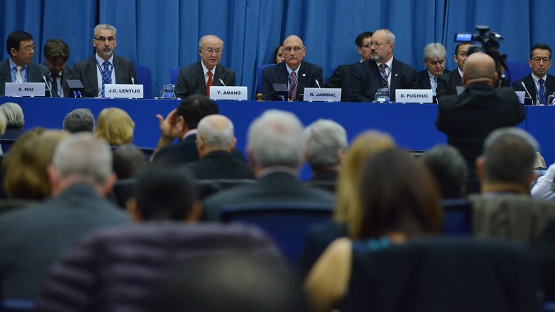(As prepared for delivery)
Good morning, Ladies and Gentlemen.
I am pleased to welcome you all to this IAEA International Conference on Global Emergency Preparedness and Response.
Responding to a nuclear or radiological emergency is the responsibility of the operating organization at the level of the facility concerned, and of the affected State.
However, the International Atomic Energy Agency, with its 165 Member States, plays the central role in the international emergency preparedness and response framework for nuclear and radiological emergencies.
We provide guidance to Member States that covers all areas of emergency preparedness and response. This includes support in understanding and mastering the latest IAEA concepts, principles and safety standards.
We assist in the design, conduct and evaluation of emergency exercises. We provide technical support to national and regional capacity-building projects.
I encourage all countries to use the many services provided by the IAEA, including our emergency preparedness review missions. These offer expert peer review of national emergency preparedness and response arrangements and capabilities.
I also encourage all countries to test their existing operational arrangements, including through international exercises such as ConvEx, to identify areas that may require further improvement.
Ladies and Gentlemen,
The Fukushima Daiichi accident four years ago was a painful reminder that a serious accident can happen anywhere, even in a developed industrial country.
My report on the accident, which was published last month, noted that weaknesses in emergency preparedness and response arrangements, and in planning for the management of a severe accident, were among the important factors in the complex chain of events that occurred.
A Technical Volume covers emergency preparedness and response and the lessons learned from the accident.
In the last few years, Japan and other users of nuclear power have taken important steps to address these and other nuclear safety issues.
In fact, I have seen major improvements in safety in every nuclear power plant that I have visited since the accident. I believe the key message – that complacency about safety must be avoided at all costs – is fully understood.
Ladies and Gentlemen,
This is the largest international gathering of experts in emergency preparedness and response which we have held to date, with more than 470 participants from 85 Member States and 19 international organizations.
I am very pleased to acknowledge the cooperation of partners from the Inter-Agency Committee on Radiological and Nuclear Emergencies in preparing this event.
Despite the best safety efforts, the possibility of radiation-related emergencies cannot be totally excluded. This makes an efficient emergency preparedness and response system essential.
Your presence here confirms that the world is serious about being ready to respond to any future nuclear or radiological emergency, should it occur.
I am confident that this IAEA conference will make an important contribution to strengthening emergency preparedness and response throughout the world. I wish you every success with your deliberations.
Thank you


